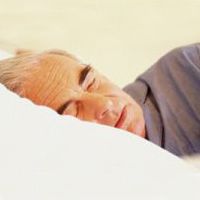New Tool May Be Viable in Measuring Sleep Disturbances in Schizophrenia
Wrist–worn actigraphy might be an alternative to polysomnography (PSG) in measuring sleep efficiency and number of awakenings in certain patients with schizophrenia, according to a study in Neuropsychiatric Disease and Treatment.

Wrist—worn actigraphy might be an alternative to polysomnography (PSG) in measuring sleep efficiency and number of awakenings in certain patients with schizophrenia, according to a study in Neuropsychiatric Disease and Treatment.
Sleep impairment is common in patients with schizophrenia, bipolar disorder, and other psychiatric conditions. PSG, while the gold standard for examining sleep patterns, is costly and is an obtrusive measure that many patients with severe mental illness have difficulty tolerating. Actigraphic devices are typically placed on the nondominant wrist with a wristband and are worn continuously for at least 24 hours. Activity is usually recorded for a period of three days to two weeks, but can be collected continuously over extended periods. The actigraphy works by using software to calculate periods of sleep based on the absence of detectable movement, along with movement-related level of activity and periods of wakefulness. It can be used to measure sleep onset, sleep offset, sleep latency, total sleep duration, and wake after sleep onset.
“Sleep complaints in mentally ill people are at risk of being discarded as an inevitable consequence of the mental illness itself,” the study authors explained. “Consequently, appropriate clinical and laboratory evaluation might be substituted by increasing the number or dosage of sedative medications. In this context, actigraphy has importance as a simple and accessible tool to monitor the sleep—wake pattern over a more prolonged period than is possible with PSG.”
But is it as effective for most patients? Not exactly, say the researchers.
Data from 37 patients with schizophrenia and five patients with bipolar disorder were examined with one-night PSG and concomitant actigraphy. The following sleep variables were compared between the two methods: total sleep time, sleep efficiency, sleep latency, number of awakenings, and time awake after sleep onset. The degree of consistency between the two methods was evaluated using the intraclass correlation coefficient and Bland—Altman plots. Subgroup analyses included splitting the analyses according to sex, diagnosis, and duration of wakefulness after sleep onset.
The intraclass correlation coefficient was high for total sleep time, moderate for the number of awakenings, and low or zero for the other examined sleep variables. These findings were reproduced in the subgroup analyses that compared men and women, as well as patients with bipolar versus schizophrenia spectrum disorders. When excluding patients with extensive periods of wakefulness after the initial sleep period (wake after sleep onset >100 minutes), the reliability of the actigraphy-derived sleep variables markedly improved.
Overall, the researchers found that the total sleep time was reliably measured, whereas measurements of other sleep parameters were not consistent with the PSG-derived measures.
“The low reliability of actigraphically defined sleep latency corroborates previous findings and is logically inferred from the difficulties encountered when distinguishing between rest and sleep in the period preceding sleep onset,” the authors concluded. “Consequently, the discussion of whether actigraphy is valid and reliable should be more nuanced, taking both the characteristics of the patient population and characteristics of their sleep patterns into consideration.”